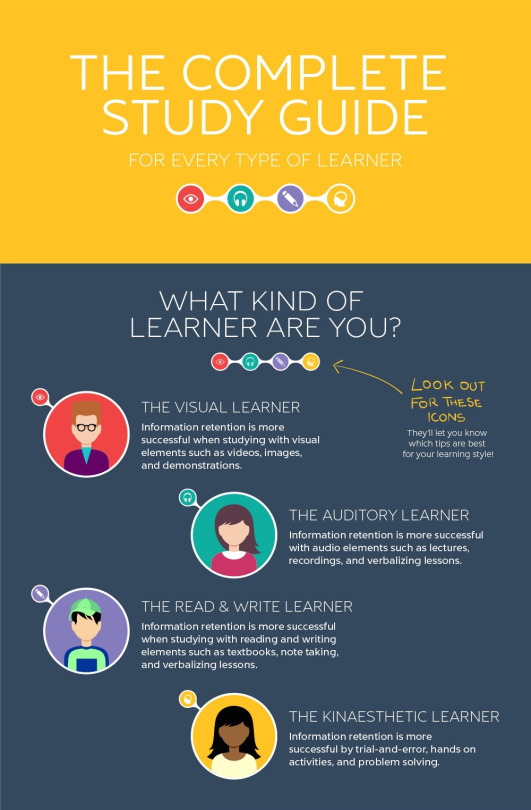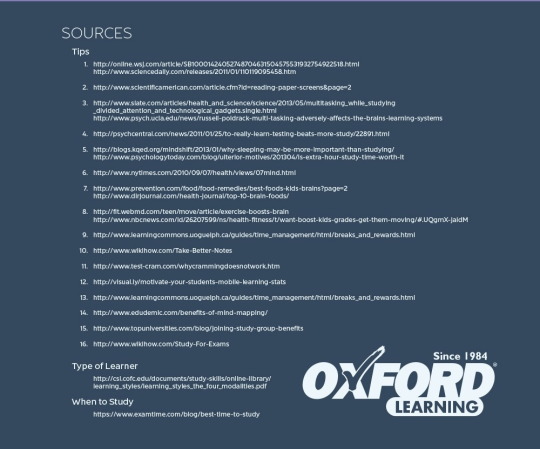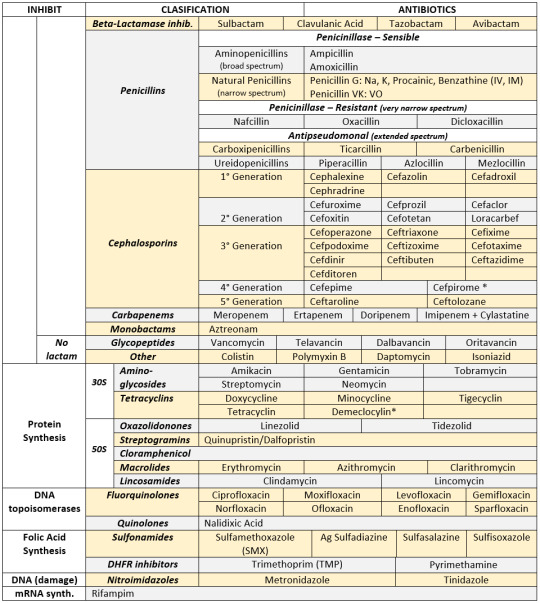I RUN A PERSONAL BLOG. KYRA RIOS. college kid. Fighting Maroon. My life is a book. The 365 pages of every chapter is waiting to be filled every day. Maybe tomorrow will bring something better. Maybe yesterday was a good mistake. But what matters is today, and we have to seize every moment and enjoy life.
Don't wanna be here? Send us removal request.
Photo
When your resident mumbles and expects you to understand.

Read more: https://sayingimages.com/confused-nick-young-meme/
3 notes
·
View notes
Photo

From the LearnTheHeart.com Cardiology Blog
So you are on the wards rounding and happen to have one of those cardiology attendings that gets some evil pleasure out of asking questions randomly to students (commonly known as “pimping”). I have seen some attendings get upset if students don’t know the correct answer and basically will send them to the library, tell them to look it up, then come back when they are smarter!
As a medical student, you MUST get these questions right if you are looking to get into a competitive residency/fellowship or just want to avoid embarrassment in front of your peers. Here is a list of the top 50 pimp questions that you may get on a cardiology rotation…know them and impress everyone! Want to really knock everyone’s socks off? I included some “Bonus” tidbits that are interesting and most people don’t know and links for those gunners who want to read more.
I have organized all of this into general cardiology pimps, physical exam pimps and ECG pimps. This is a lot to know, but should prepare you well!
General Cardiology Pimps
1. What are the toxicities of amiodarone?
I dare you to look your attending in the eye with a serious face and say “BITCH” if asked this question! It is probably not wise to do this unless you are sure they have a good sense of humor. Remember the mnemonic BITCH to recall the issues with amiodarone
Bradycardia/Blue man syndrome Interstitial lung disease Thyroid (hyperthyroid OR hypothyroid) Corneal/Cutaneous Hepatic/Hypotension
Another way to remember is “Check PFTs, TFTs and LFTs” for pulmonary, thyroid and liver function tests. But really the only monitoring that is done is a TSH level every 6 months as routine PFTs and LFTs are not recommended.
2. What are the causes of atrial fibrillation?
Remember PIRATES for the causes of atrial fibrillation. This is quite a comprehensive list:
Pulmonary embolism, Pulmonary disease, Post-operative Ischemic heart disease, Idiopathic (“lone atrial fibrillation”), IV central line (irritating the right atrium) Rheumatic valvular disease (mitral stenosis or regurgitation) Anemia, alcohol (“holiday heart”), Age, Autonomic tone (vagal atrial fibrillation) Thyroid disease (hyperthyroidism) Elevated blood pressure (hypertension), Electrocution Sleep apnea, Sepsis, Surgery
3. What are the different types of shock and their treatment?
This picture summarizes it all:
4. What are the causes of congestive heart failure (CHF) exacerbations?
You will very likely get this one. Congestive heart failure (CHF) is the #1 cause of hospital admission in the US. Whenever a patient comes in with volume overload from CHF, you must always as the question “Why did this patient’s heart failure get worse”. Here are the reasons from most common to least:
1. Medication non-compliance (not taking diuretics or other medications) 2. Fluid/sodium restriction non-compliance 3. Acute worsening of cardiac output:
Arrhythmia
Ischemia or acute coronary syndrome
Worsening/Progression of cardiomyopathy/valve disease
5. Which medications for systolic congestive heart failure reduce mortality?
Easy…beta-blockers, ACE inhibitors or ARBs, and spironolactone. If ACE inhibitor and ARB intolerant, then the combination of hydralazine and nitrates are used and reduce mortality, especially in African Americans. Note that digoxin and diuretics DO NOT reduce mortality! They are for symptom relief and to prevent heart failure hospitalization only. The gunners can review Heart Failure here.
6. Which beta-blockers are FDA approved to treat systolic congestive heart failure?
Not all beta-blockers have clinical trials to support their use in systolic heart failure. Use these three:
Carvedilol (Coreg) Bisoprolol Metoprolol succinate (Toprol) and NOT metoprolol tartrate (Lopressor)
Atenolol, propranolol and the other beta-blockers SHOULD NOT be used in systolic heart failure.
7. What is the most common cause of right heart failure?
Left heart failure! When anything causes left heart failure (ischemia, valve disease, cardiomyopathy etc…), the LV pressure increases and transmits back to the lungs causing pulmonary hypertension. This then strains the right heart and eventually causes right heart failure. Know the difference between signs/symptoms of left versus right heart failure.
8. A patient comes in with chest pain, what are the 4 life-threatening causes that should be exclude?
Acute coronary syndrome Pulmonary embolism Aortic dissection Esophageal rupture (Boerhaave’s syndrome)
9. What are the signs/symptoms and issues with digoxin toxicity?
This is a good one:
Nausea/Vomiting/Abdominal pain
Weakness/dizziness
Symptoms of arrhythmia
Altered mental status
Vision changes (yellow vision or “Xanthopsia”)
Digoxin causes EVERY arrhythmia EXCEPT rapidly conducted atrial rhythms (atrial fibrillation or flutter with a rapid ventricular rate). The classic ECG has the “reverse check” sign:
The two pathognomonic rhythms in digoxin toxicity are atrial tachycardia with 2:1 block and bidirectional ventricular tachycardia.
Atrial Tachycardia with 2:1 AV Block ECG Example 1
Atrial Tachycardia with 2:1 AV Block ECG Example 2
Bidirectional Ventricular Tachycardia ECG Example
Reverse with digibind if:
Evidence of end-organ damage (altered mental status, shock liver etc…)
Life threatening arrhythmia
Potassium level > 5.5
Digoxin CAUSES hyperkalemia, but is potentiated by hypokalemia (also hypocalcemia)
Wow…thats a lot to know.
BONUS: The “Stone Heart” theory. Digoxin toxicity can cause hyperkalemia. Recall that the treatment for hyperkalemia causing ECG changes is usually intravenous calcium administration. In the setting of digoxin toxicity and hyperkalemia, giving IV calcium may be potentially fatal. The massive influx of calcium into myocytes after the IV calcium is given has been theorized to induce a non-contractile state and has been termed “Stone Heart” (recall the end-point effect of digoxin’s actions is to open calcium channels increasing influx into cells).
BONUS BONUS: Vincent Van Gogh (the artist) was toxic on digoxin (he used the flower foxglove for a seizure disorder) and this is why he painted everything yellow before he reportedly commited suicide. Check out this painting of his:
10. What are the FIVE life-threatening complications of aortic dissection?
Coronary dissection, usually the right coronary artery (RCA) causing inferior ST elevation MI
Carotid dissection causing stroke
Aortic rupture
Cardiac tamponade from rupture into pericardium
Acute aortic valve regurgitation causing cardiogenic shock
11. Which atrial fibrillation patients can we use only aspirin (ASA) for and who needs full anticoagulation to prevent stroke?
Use the CHA2DS2 Vasc Score:
If 0-1 points then aspirin 81 mg - 325 mg If > 2 points then full anticoagulation (warfarin, dabigatran, rivaroxiban, apixiban)
Congestive heart failure Hypertension Age ( > 65 = 1 point, > 75 = 2 points) Diabetes Stroke/TIA (2 points) Vascular disease (peripheral arterial disease, previous MI, aneurysm aortic atheroma)
NOTE: Female gender is also included in this scoring system = 1 point!
12. What are the different properties of beta-blockers and name specific drugs?
Cardioselectivity: All beta-blockers act upon both beta-1 and beta-2 receptors. The “Cardioselective” beta-blockers act upon beta-1 receptors much more than the beta-2 receptors. For this reason, the cardioselective beta-blockers are safer to use in patients with asthma or reactive airway diseases.
Lipid solubility: Beta-blockers that are lipid soluble, such as propranolol or metoprolol, can cross the blood-brain barrier easily. These medications are commonly used for migraine headaches, stage fright and panic attacks for these reasons.
Intrinsic sympathomimetic activity (ISA): Beta-blockers with ISA only partially antagonize while actually causing a small degree of activation of the beta receptors. So they will have some beta-blocking effects, but not to the degree of beta-blockers without ISA. These are commonly used in younger patients or in athletes where heart rates need to elevate (allowing overall increased cardiopulmonary effort) in order to compete in sports. Examples include pindolol and acebutolol.
Membrane stabilization: Stabilizing membranes decreases the propagation of action potentials. This is also the mechanism that local anesthetics work (lidocaine). Class I antiarrhythmic drugs possess this characteristic as well. The importance of this is not clear in clinical medicine in regards to beta-blockers. Perhaps this is partially an explanation for propranolol treating migraine headaches.
13. What are the side effects and other issues with ACE inhibitors?
Just remember the mneumonic “CAPTOPRIL”
Cough Angioedema Potassium excess Taste changes Orthostatic hypotension Pregnancy contraindication/Pressure drop (hypotension) Renal failure/Rash Indomethacin inhibition Leukopenia (rare)
14. What class of antiarrhythmic drug is ______ in?
Remember what drug is in what class was hard for me, even in fellowship! Now that I use them all the time I can remember them. Just keep going over them and eventually they will stick. A more detailed review of antiarrhythmic drugs is here.
Class IA: “Queen Amy Proclaims Diso’s Pyramid” = Quinidine, Amiodarone, Procainamide, Disopyrimide
Class IB: Lidocaine, mexiletine
Class IC: Flecainde, propafenone
Class II: Beta-blockers
Class III: Sotalol, amiodarone (yes…again), dronedarone, dofeilide
Class IV: Calcium channel blockers (diltiazem, verapamil)
Class V: Mechanism unknown
15. How do you diagnose and treat cardiac tamponade?
Beck’s triad: Hypotension, muffled heart sounds, elevated neck veins Pulsus paradoxus: Abnormal if > 12 mmHg. Review how to measure here. Water Bottle Heart: Chest x-ray finding - heart shaped like a canteen
Cardiac tamponade is a CLINICAL diagnosis, not an echocardiographic one, but an echo will show a pericardial effusion and if the right ventricle is collapsing in diastole, then tamponade is thought to be present (right ventricle is lowest pressure chamber, so collapses first. Pressure is lower in diastole than systole).
Treat with IV fluids to increase preload and prevent right ventricular collapse. Pericardiocentesis is therapeutic.
BONUS: DO NOT rely on analysis of pericardial fluid like we to pleural fluid after thoracentesis of ascites after paracentesis as the whole “transudate or exudate” thing is not validated here.
16. What is the classic triad of symptoms in aortic stenosis?
Angina, Syncope and Dyspnea (from heart failure) is the classic triad.
BONUS: Back in the day aortic valve replacement was not available, so they watched people with severe aortic stenosis to see how long they live. A classic pimp question is mortality based on that triad of symptoms if the aortic valve is not replaced. Average life expectancy is:
Dyspnea = 2 years Syncope = 3 years Angina = 5 years
This pic shows it all:
17. What is the most common cause of mitral valve stenosis?
By far the most common cause is rheumatic heart valve disease. Gunners read on mitral stenosis here.
BONUS: Mitral stenosis is in the differential diagnosis of hemoptysis which can occur due to rupture of a bronchial vein (they call this “pulmonary apoplexy”).
18. What are the indications for aortic valve replacement (AVR) in aortic stenosis and aortic regurgitation?
For either aortic regurgitation or stenosis, aortic valve replacement is indicated when symptoms occur or if the left ventricular systolic function declines, but there is one more tricky one for aortic regurgitation. AVR is indicated even if the left ventricular ejection fraction is normal when the end systolic dimension increases to > 55 mm or end diastolic dimension to > 75 mm on echocardiography.
19. What are the causes of mitral valve regurgitation?
Mitral regurgitation is either organic (actual valve apparatus problem) or functional (dilation of the annulus).
20. What is the treatment for coronary vasospasm?
DO NOT give beta-blockers!!! So they say this causes “unopposed” agonism at alpha receptors since the circulating catecholamines can’t act on the beta-receptors if a beta-blocker is given. The catecholamines decide to go to the alpha receptors and stimulate them which can worsen vasospasm. Use a non-dihydropyridine calcium channel blocker (i.e. amlodipine). Maybe the two beta-blockers that also block alpha receptors are OK (carvedilol and labetalol), but who knows…there is no data on this.
BONUS: Coronary vasospasm can occur with cocaine intoxication, so the same above principle applies (don’t use beta-blockers).
21. Which statin lowers the LDL the most? Which has fewest side-effects?
Rosuvastatin lowers LDL the most. Pravastatin fewest side-effects and safest in liver disease. Probably not much more to know but for the gunners here is a HMG CoA Reductase inhibitor review.
22. What are the mechanical complications of myocardial infarction?
Acute ventricular septal defect (VSD) Acute mitral regurgitation (MR) Left ventricular free wall rupture
For the gunners read about more complications of MI in the STEMI review.
23. What is the most common cause of aortic valve stenosis in a patient over the age of 70? Under the age of 70?
Over the age of 70 = senile calcific aortic stenosis Under the age of 70 = bicuspid aortic valve
24. In a patient with unstable angina or a non-ST elevation MI (NSTEMI), when should an early invasive strategy be used?
Invasive coronary angiography (an “early invasive” approach) in unstable angina or non-ST elevation MI is indicated when:
1. Increased cardiac biomarkers (troponin, CK-MB) 2. New ST segment depression 3. Signs or symptoms of congestive heart failure (rales on examination, hypoxia with pulmonary edema on chest x-ray) 4. Hemodynamic instability 5. Sustained ventricular tachycardia or ventricular fibrillation 6. Recent coronary intervention within 6 months 7. Prior coronary artery bypass grafting 8. High TIMI risk score 9. Reduced left ventricular systolic function (EF < 40%) 10. Recurrent angina at rest or with low level activity 11. High risk findings from non-invasive testing
25. What are the absolute and relative contraindications to thrombolytics?
Absolute contraindications to thrombolytic therapy include:
1. Prior intracranial hemorrhage 2. Ischemic stroke within 3 months 3. Known cerebrovascular abnormality such as aneurysm or arteriovenous malformation 4. Known malignant intracranial tumor 5. Significant closed head trauma or facial trauma within 3 months
Relative contraindications to thrombolytic therapy include:
1. Uncontrolled hypertension (blood pressure > 180/110) either currently or in the past 2. Intracranial abnormality not listed as absolute contraindication (i.e. benign intracranial tumor). 3. Ischemic stroke > 3 months prior 4. Bleeding within 2-4 weeks (excluded menses) 5. Traumatic or prolonged cardiopulmonary resuscitation (CPR) 6. Major surgery within 3 weeks 7. Pregnancy 8. Current use of anticoagulants 9. Non-compressible vascular puncture 10. Dementia
26. What are the indications for valve replacement in patients with endocarditis?
Congestive heart failure from valvular regurgitation
Failure of antibiotic therapy to successfully suppress the infection or infection with difficult to treat organisms (fungal, Pseudomonas, Brucella, drug-resistant organisms)
Valvular annular abscess
Peripheral embolism of vegetation
Size of vegetation > 1.0 cm
27. What are the common causes of endocarditis?
Streptococcal viridins, Staph aureus, and Enterococcus are the leading three.
BONUS: If Streptococcus bovis endocarditis is associated with colon cancer.
BONUS BONUS: Know the culture negative causes of endocarditis (vegetation on the valve but no organism growing in blood cultures). These are known as the “HACEK” organisms:
Haemophilus aphrophilus Actinobacillus actinomycetemcomitans Cardiobacterium hominis Eikenella corrodens Kingella kingae
28. What are the secondary causes of hypertension?
Remember “ABCDEF”
Apnea (obstructive sleep apnea), Acromegaly, Accuracy (incorrect measurement) Birth control, Bad kidney Coarctation of the aorta, Cushing’s syndrome, Conn’s syndrome, Catecholamines Drugs (alcohol, nasal decongestants, estrogens) Endocrine disorders, Erythropoietin Fibromuscular dysplasia
BONUS: The most common cause of difficult to control hypertension is uncontrolled obstructive sleep apena followed by renal artery stenosis.
29. Which cardiac biomarker elevates first? Which stays elevated the longest?
Myoglobin elevates first (30 minutes), then troponin and creatine kinase (CK). Troponin stays high for 7-10 days, but CK for only 3-4 days.
30. What are the three types of cardiomyopathy?
Dilated cardiomyopathy: This results in left ventricular systolic dysfunction and clinical manifestations of congestive heart failure. Etiologies include viral, alcoholic, idiopathic, familial and other rare causes.
Hypertrophic cardiomyopathy: Also known as hypertrophic obstructive cardiomyopathy (HOCM), this results in abnormal hypertrophic changes most commonly in the interventricular septum with pathologic “myocardial disarray”. HOCM is familial in about 50% of cases and transmitted in an autosomal dominant fashion. HOCM can result in clinic heart failure, life-threatening arrhythmias, mitral regurgitation and sudden cardiac death.
Restrictive cardiomyopathy: This results in heart failure related to severe diastolic dysfunction. Causes include amyloid heart disease, infiltrative disorders, and familial.
Physical Examination Pimps
31. Take a listen to his heart, do you hear the S4 heart sound?
NO YOU DON’T!!! The patient is in atrial fibrillation and CAN’T have an S4 heart sound! Recall that an S4 happens when the atrium contracts into a non-compliant left ventricle causing the blood to forcefully strike the left ventricle creating the sound. Patients with atrial fibrillation DO NOT have any atrial contraction and are not able to have an S4 heart sound. Don’t let your attending trick you…
32. What causes an S3 heart sound versus an S4 heart sound?
An S3 heart sound, a.k.a. the ventricular gallop can be present in systolic heart failure, but can also be there in normal healthy hearts. The S4 heart sound is almost always pathologic and can occur in the setting of diastolic heart failure and/or myocardial ischemia.
33. How severe is the aortic stenosis on exam?
There are only 3 ways to tell how severe the aortic stenosis is on physical exam:
1. Timing of the murmur peak (late in systole = severe) 2. The intensity of the S2 heart sound (soft or absent = severe) 3. Pulsus Parvus et Tardus (carotid upstroke weak and late)
34. What are the three causes of a holosystolic murmur?
Mitral regurgitation, tricuspid regurgitation, ventricular septal defect.
BONUS: The “Galliveridin” phenomenon in aortic stenosis is when the murmur radiates to the apex and can sound holosystolic mimicking mitral regurgitation. Handgrip maneuvers or transient arterial occlusion will increase mitral regurgitation and not the aortic stenosis murmur. Gunners read an aortic stenosis review here.
35. Describe the murmur of aortic regurgitation.
Early diastolic decrescendo. If an actual valve problem caused the aortic regurgitation (i.e. endocarditis), then the murmur is at the left lower sternal border BUT if it is from dilation of the aorta (i.e. ascending aortic aneurysm as occurs in Marfan’s), then the murmur is at the aortic listening post which is the right upper sternal border. Tricky.
BONUS: The murmur is best heard with the patient leaning forward at end-expiration.
BONUS BONUS: When the aortic regurgitation is severe the murmur is quite short in early diastole since sooooo much blood leaks back into the left ventricle that the pressure between the aorta and the LV equalize quickly. Conversely, if mild it takes quite some time for the pressure to equalize so the murmur is longer (see pic)
36. What is the Austin-Flint murmur?
This is when the aortic regurgitation get strikes the anterior leaflet of the mitral valve in diastole forcing it partially closed. This kind of creates a mitral stenosis-like picture and a “diastolic rumble” at the cardiac apex called the Austin-Flint murmur.
37. What are some of the peripheral signs of aortic regurgitation?
Reel off all of these and people will be staring with their mouths wide open:
Corrigan’s pulse: A rapid and forceful distension of the arterial pulse with a quick collapse. De Musset’s sign: Bobbing of the head with each heartbeat (like a bird walking). Muller’s sign: Visible pulsations of the uvula. Quincke’s sign: Capillary pulsations seen on light compression of the nail bed. Traube’s sign: Systolic and diastolic sounds heard over the femoral artery (“pistol shots”). Duroziez’s sign: Gradual pressure over the femoral artery leads to a systolic and diastolic bruit. Hill’s sign: Popliteal systolic blood pressure exceeding brachial systolic blood pressure by 60 mmHg or greater (most sensitive sign for aortic regurgitation). Shelly’s sign: Pulsation of the cervix. Rosenbach’s sign: Hepatic pulsations. Becker’s sign: Visible pulsation of the retinal arterioles. Gerhardt’s sign (aka Sailer’s sign): Pulsation of the spleen in the presence of splenomegaly. Mayne’s sign: A decrease in diastolic blood pressure of 15 mmHg when the arm is held above the head (very non-specific). Landolfi’s sign: Systolic contraction and diastolic dilation of the pupil.
38. What maneuver makes the murmur of hypertrophic obstructive cardiomyopathy (HOCM) louder?
Valsalva decreases left ventricular filling. In HOCM this allows the very thick interventricular septum to buldge more into the left ventricular cavity causing more of a left ventricular outflow tract obstruction, thus making the murmur louder. Much different than the murmur of aortic stenosis (see pic).
39. What murmur gets louder with inspiration?
Tricuspid regurgitation does. This is called “Carvallo’s sign”. Pulmonic regurgitation can sometimes as well.
BONUS: Severe tricuspid regurgitation causes large “V waves” in the jugular venous pulsations from blood leaking back from the right ventricle into the internal jugular during systole. Also look for a pulsatile liver.
ECG Pimps
First of all, you need to know the basics, like how to diagnose a left and right bundle branch block, chamber enlargements, axis, heart rate, myocardial infarctions etc… read the ECG Review here. Below are some of the specific ECG pimp questions that I have run into.
40. What is the most common ECG findings of pulmonary embolus?
Everyone wants to reflexively say “S1Q3T3” and if you do, then you are wrong. It is sinus tachycardia. The S1Q3T3 pattern is the classic finding (see pic below), but sinus tachycardia is more common.
BONUS: The S1Q3T3 pattern is not just for pulmonary embolism, but for anything that causes acute right heart strain (can occur in COPD or asthma exacerbations, respiratory failure etc…) and it is also called the McGinn-White sign.
41. Can you diagnose a myocardial infarction on ECG if there is a left bundle branch block (LBBB)?
Whoooo hoooo! You are ready for this one! You know that traditionally the answer is no, ischemia is not readily detected if a left bundle branch block (LBBB) is present, but there are some means to do this. The Sgarbossa criteria, Chapman’s sign, Caberera’s sign and also by examining the T waves in lead V5 and V6. Know these and you will look like a superstar!
Sgarbossa criteria: This is a point scoring system.
1. ST elevation > 1 mm and in the same direction (concordant) with the QRS complex. 5 points
2. ST depression > 1 mm in leads V1, V2, or V3. 3 points
3. ST elevation > 5 mm and in the opposite direction (discordant) with the QRS. 2 points
A score of 3 points is required to diagnose an acute myocardial infarction. Criteria #3 is under debate as to its usefulness, so basically you need to have either criteria 1 or criteria 2. Below is an image of ST elevation in V5 and V6 with a LBBB:
Chapman’s sign: A notch in the upslope of the R wave in lead I, aVL or V6. This has a low sensitivity, but a specificity of about 90%. See Chapman sign ECG here.
Cabrera’s sign: Notching at 40 milliseconds in the upslope of the S wave in lead V3 and V4. This has a poor sensitivity of 27% for myocardial infarction. See Cabrera’s sign ECG here.
T waves in V5 and V6: If upright in these leads when a left bundle branch block is present, then ischemia is more likely present, although sensitivity is low for this finding.
42. What are the causes of AV dissociation on ECG?
Ventricular tachycardia (VT) and complete heart block (3rd degree AV block)
Here is AV dissociation from VT:
Here is AV dissociation in complete heart block:
BONUS: When AV dissociation is present, this causes the atria to contract at the same time as the ventricle when the P wave falls on top of the QRS complex. Thus, the atrium is contracting against a closed mitral/tricuspid valve. This makes blood forcefully go backwards causing intermittent “cannon A waves” in the jugular venous waveform.
BONUS BONUS: That huge stretch of the atrium during AV dissociation due to the above mentioned atrial contraction against closed valves causes release of ANP (atrial natriuretic peptide) which causes diuresis and thus polyuria! Yes…polyuria can be a symptom of complete heart block! BAAAMMM!!! Not too many people know this and it will certainly impress.
43. What are the ECG changes of hyperkalemia and what can you give to resolve them?
Peaked T waves is the answer most people are looking for. The QRS complex can widen in a non-specific pattern (not left or right bundle) a.k.a. a “non-specific intraventricular conduction delay”. Eventually
44. The patient has 2:1 AV block - How can you tell if it is 2nd degree type I or 2nd degree type II AV block?
First quick rule: If the PR interval of the conducted beat is prolonged AND the QRS complex is narrow, then it is most likely second degree type I AV nodal block (Wenckebach). Alternatively, if the PR interval is normal and the QRS duration is prolonged, then it is most likely second degree type II AV block and a pacemaker is probably warranted.
Less quick rule: Exercise the patient. Walk them in the hall or on a treadmill. If it is 2nd degree type I, the heart rate will increase and you will see prolonging PR intervals until a beat is dropped. If it is 2nd degree type II, then nothing will happen. You can also give atropine or do a carotid massage and see what happens.
Here is a pic of 2:1 AV block:
45. What is a _____ wave on the ECG?
Detla wave = Wolff-Parkinson White (short PR interval that is slurred into the QRS complex)
Osborne wave (a.k.a. J wave) = Classically hypothermia, but also hypercalcemia
U wave = hypokalemia
Epsilon wave = Arrhythmogenic right ventricular dysplasia (ARVD) which is RARE
46. What are the causes of ST elevation on ECG besides acute MI?
ECG Causes of ST segment elevation: ELEVATION
Electrolyte abnormalities Left bundle branch block Aneurysm of left ventricle Ventricular hypertrophy Arrhythmia disease (Brugada syndrome, ventricular tachycardia) Takotsubo/Treatment (iatrogenic pericarditis) Injury (myocardial infarction or cardiac contusion) Osborne waves (hypothermia or hypocalcemia) Non-atherosclerotic (vasospasm or Prinzmetal’s angina)
47. What are the ECG findings of a posterior MI?
You better know anterior and inferior MI ECG changes. The posterior MI ECG findings are a bit more tricky:
ST segment depression (not elevation) in the septal and anterior precordial leads (V1 to V4). This occurs since these ECG leads will see the MI backwards (since the leads are placed anteriorly, but the myocardial injury is posterior).
The ratio of the R wave to the S wave in leads V1 or V2 is > 1.
ST elevation in the posterior leads of a posterior ECG (leads V7 to V9). Suspicion for a posterior MI must remain high, especially if inferior ST elevation is also present.
ST elevation in the inferior leads (II, III, and aVF) may be seen if an inferior MI is also present
48. What are the three irregularly irregular rhythms on ECG?
The three irregularly irregular rhythms are atrial fibrillation, atrial flutter with VARIABLE conduction and multifocal atrial tachycardia (MAT)
49. What are the causes of a prolonged QT interval?
Electrolyte abnormalities (hypokalemia, hypocalcemia, hypomagnesemia)
Medications (quinolones, macrolides, haloperidol, class IA and class III antiarrhymics)
Genetic long QT syndromes
Myocardial ischemia
BONUS: Patients with a prolonged QT interval are at risk for Torsades de Points or polymorphic ventricular tachycardia (see pic). Treat with IV magnesium.
50. How can you distinguish the ECG findings of pericarditis from myocardial infarction or early repolarization?
The ST elevation that occurs in pericarditis is “diffuse” meaning in every lead. Acute MI frequently has “reciprocal” ST depression and less commonly PR segment depression as is present in pericarditis.
BONUS: Another cause of PR depression is “atrial infarction”.
Any other pimp questions you have run into that you think we should know?
Leave a comment on the LearnTheHeart.com blog article “Top 50 Cardiology Pimp Questions”
3K notes
·
View notes
Text
internal medicine gothic
you come to the hospital in the morning to see your patients. you say good morning to the housestaff, ask about overnight events. they are surprised, weren’t you just here? yes. yes, you were. you were here. you’ve always been here.
it is time for you to do the very important medicine reconciliation. you ask the patient. they say they don’t know, you should have the list. you ask the staff for the list. there is no list, but they reassure you it’s updated. you look on the EMR, the updated med list has no dosages. you ask the patient for their pharmacy. you call the pharmacy. there is no record of your patient.
you need a stat lab. the blood gets to the lab. it’s hemolyzed. you get it sent again. it’s hemolyzed. third time’s the charm? your patient has no more veins.
you have managed your patient. you have a plan. you just need to run this by a consultant. you call a consultant. the phone rings for eternity.
there, you see your consultant go into a patient room. you have a quick question for them. they never come out. what consultant? everyone including your patient swear they were never here. the consultant’s note shortly appears in the EMR. it does not answer your question.
you are called to assess a situation. before the situation can be assessed, there are cries for calls - did you call the ICU , did you call cardiology, did you call GI, did you call the lab, did you call xray tech, did you call the family, did you call the caregiver, did you call the POA who is neither the family nor the caregiver…you will, you will, you will, you
“how was your day?” someone asks you 10 minutes before change of shift. your face falls. you did not use the Forbidden Words all day but now it matters not. a darkness passes over the ward. your pager and phone go off. it was almost the end. now it is the beginning
511 notes
·
View notes
Photo







An Infographic Of Useful Tips For All Types Of Learners
24K notes
·
View notes
Photo










2018 Student Planner Printable Pack
Super excited to have published my first proper planner for 2018! I’ve made it to include 85 pages of content which are going to help you in organising, planning and improving your grades!
It is an instant download purchase so you have the planner immediately and can use in any way you want! Either in a discbound planner, as individual pages or bound together.
It includes 3 files: A4, A5 and letter to suit your needs!
I hope you guys like it! I’d love to hear your thoughts!! xxx
Download from this link!
PS: You can get 10% any purchase using ‘student10′! :-)
4K notes
·
View notes
Conversation
how i read
a book: oh, only 180 pages left, I'll finish this today
a textbook: another 8 pages left what the fuck this is too much
316K notes
·
View notes
Photo

finally organized my study space and I’m honestly in love with my new cacti
10K notes
·
View notes
Photo

Look, idk about you guys, but there are people who have gotten intimidated color coding Midliners. My sister is one of them. But instead of coding them, I made swatches.
Here is a small list of swatches that I think you’ll enjoy either for studying, journaling, drawing, etc. Which one is your favorite?? Mine is the “Schuyler Sisters”.
I’ll also be posting photos of the Midliners as well to give you a more accurate color since the lightning in the photo made the colors look weird.
26 notes
·
View notes
Photo

ANTIBIOTICS CHEAT SHEET :)
Also, REMEMBER!!!!
* Sulfonamides compete for albumin with:
Bilirrubin: given in 2°,3°T, high risk or indirect hyperBb and kernicterus in premies
Warfarin: increases toxicity: bleeding
* Beta-lactamase (penicinillase) Suceptible:
Natural Penicillins (G, V, F, K)
Aminopenicillins (Amoxicillin, Ampicillin)
Antipseudomonal Penicillins (Ticarcillin, Piperacillin)
* Beta-lactamase (penicinillase) Resistant:
Oxacillin, Nafcillin, Dicloxacillin
3°G, 4°G Cephalosporins
Carbapenems
Monobactams
Beta-lactamase inhibitors
* Penicillins enhanced with:
Clavulanic acid & Sulbactam (both are suicide inhibitors, they inhibit beta-lactamase)
Aminoglycosides (against enterococcus and psedomonas)
* Aminoglycosides enhanced with Aztreonam
* Penicillins: renal clearance EXCEPT Oxacillin & Nafcillin (bile)
* Cephalosporines: renal clearance EXCEPT Cefoperazone & Cefrtriaxone (bile)
* Both inhibited by Probenecid during tubular secretion.
* 2°G Cephalosporines: none cross BBB except Cefuroxime
* 3°G Cephalosporines: all cross BBB except Cefoperazone bc is highly highly lipid soluble, so is protein bound in plasma, therefore it doesn’t cross BBB.
* Cephalosporines are "LAME“ bc they do not cover this organisms
L isteria monocytogenes
A typicals (Mycoplasma, Chlamydia)
M RSA (except Ceftaroline, 5°G)
E nterococci

* Disulfiram-like effect: Cefotetan & Cefoperazone (mnemonic)
* Cefoperanzone: all the exceptions!!!
All 3°G cephalosporins cross the BBB except Cefoperazone.
All cephalosporins are renal cleared, except Cefoperazone.
Disulfiram-like effect
* Against Pseudomonas:
3°G Cef taz idime (taz taz taz taz)
4°G Cefepime, Cefpirome (not available in the USA)
Antipseudomonal penicillins
Aminoglycosides (synergy with beta-lactams)
Aztreonam (pseudomonal sepsis)
* Covers MRSA: Ceftaroline (rhymes w/ Caroline, Caroline the 5°G Ceph), Vancomycin, Daptomycin, Linezolid, Tigecycline.
* Covers VRSA: Linezolid, Dalfopristin/Quinupristin
* Aminoglycosides: decrease release of ACh in synapse and act as a Neuromuscular blocker, this is why it enhances effects of muscle relaxants.
* DEMECLOCYCLINE: tetracycline that’s not used as an AB, it is used as tx of SIADH to cause Nephrogenic Diabetes Insipidus (inhibits the V2 receptor in collecting ducts)
* Phototoxicity: Q ue S T ion?
Q uinolones
Sulfonamides
T etracyclines

* p450 inhibitors: Cloramphenicol, Macrolides (except Azithromycin), Sulfonamides
* Macrolides SE: Motilin stimulation, QT prolongation, reversible deafness, eosinophilia, cholestatic hepatitis
* Bactericidal: beta-lactams (penicillins, cephalosporins, monobactams, carbapenems), aminoglycosides, fluorquinolones, metronidazole.
* Baceriostatic: tetracyclins, streptogramins, chloramphenicol, lincosamides, oxazolidonones, macrolides, sulfonamides, DHFR inhibitors.
* Pseudomembranous colitis: Ampicillin, Amoxicillin, Clindamycin, Lincomycin.
* QT prolongation: macrolides, sometimes fluoroquinolones
10K notes
·
View notes
Photo






A few new printables available on my Etsy shop! :-) Here are the links:
student academic/college planner printable pack
academic yearly planner printable set (2017-2018)
daily schedule and task printable set
30 day habit tracker printable
note taking template pack (lined, dotted, lecture, grid, cornell)
weekly planner printable set
Use ‘back2school�� for 10% discount on any purchase (no minimum spend!) :-) xx
5K notes
·
View notes
Text
ok universe, i’m ready to feel good things. make me feel good things.
2M notes
·
View notes
Photo

Welcome to #DeStressMonday ♥ via @theoneproject-co
Learn how photography can help with anxiety: www.theoneproject.co
25K notes
·
View notes




